Explanation of my 10 Ballon d'Or 1965
This is my ranking, my opinion on the Ballon d'Or of the year 1965. This ranking is based on the calendar year, not the season. What counts for this ranking is the player's regularity over the calendar year, the number of matches played, the ability to raise his level in big games, statistics (goals, assists, clean sheets, goals conceded, etc.) and trophies won (collective and individual).
#10 Coen Moulijn
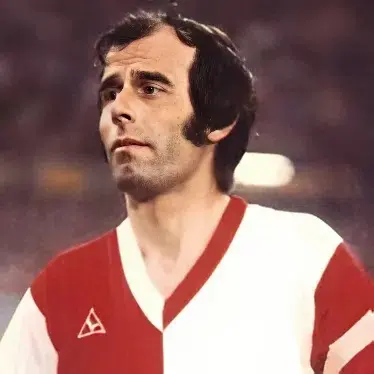
- Age : 27/28 years old
- Club : Feyenoord Rotterdam
- Statistics : 29 games, 2 goals, / assists
- Trophies : Eredivisie, Dutch Cup
- Individual Awards : Dutch POTY, Eredivisie POTY, Eredivisie TOTY
In the calendar year 1965, Coen Moulijn was the undisputed maestro of Dutch football, a left-winger whose artistry and precision turned matches into masterpieces. As the creative engine of Feyenoord, Moulijn led the club to the Eredivisie title, dazzling fans with his trademark dribbles, pinpoint crosses, and tireless work ethic. Statistically, Moulijn played 29 matches, scored 2 goals, and—according to contemporary accounts and retrospective analyses—likely delivered 20 to 25 assists, a staggering number in an era when assist data was rarely recorded but deeply felt. His influence was so profound that he was named Dutch Footballer of the Year, a rare honor for a winger and a testament to his impact on every phase of play. In the European Cup, Moulijn featured in both legs against Real Madrid, helping Feyenoord secure a famous 2–1 home victory before falling in the return leg. His performance against the Spanish giants was emblematic of his style—fearless, fluid, and fiercely loyal to the club he never left. Internationally, Moulijn earned 4 caps for the Netherlands in 1965, including a standout performance in a 1–1 draw against England, where he scored a memorable goal. Though the Dutch national team was still finding its footing, Moulijn’s presence gave it flair and credibility.
#9 George Best
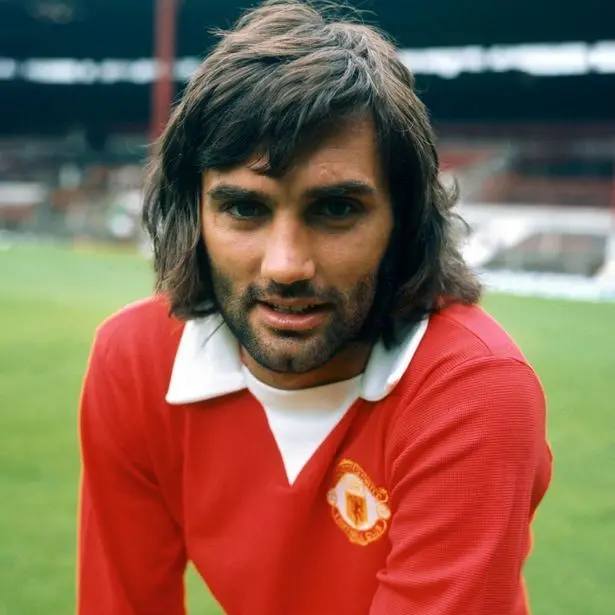
- Age : 18/19 years old
- Club : Manchester United
- Statistics : 59 games, 19 goals, / assists
- Trophies : Premier League, Community Shield
- Individual Awards : Premier League TOTY
In the calendar year 1965, George Best was no longer just a rising star—he was the spark that lit up English football. At just 19 years old, the Northern Irish winger was dazzling fans with his fearless dribbling, magnetic charisma, and a swagger that made him the face of a new footballing era. At club level, Best was a key figure in Manchester United’s First Division title-winning campaign, their first since the Busby Babes era. He played 59 matches and scored 19 goals that year, combining with legends Denis Law and Bobby Charlton to form one of the most feared attacking trios in Europe. His performances were electric—gliding past defenders, scoring from impossible angles, and thrilling crowds at Old Trafford with every touch. Internationally, Best continued to represent Northern Ireland, adding to his growing reputation despite the team’s limited success. His flair and individuality made him a standout even in matches where his side struggled, and he quickly became a symbol of pride for a nation hungry for footballing glory.
#8 Bobby Moore
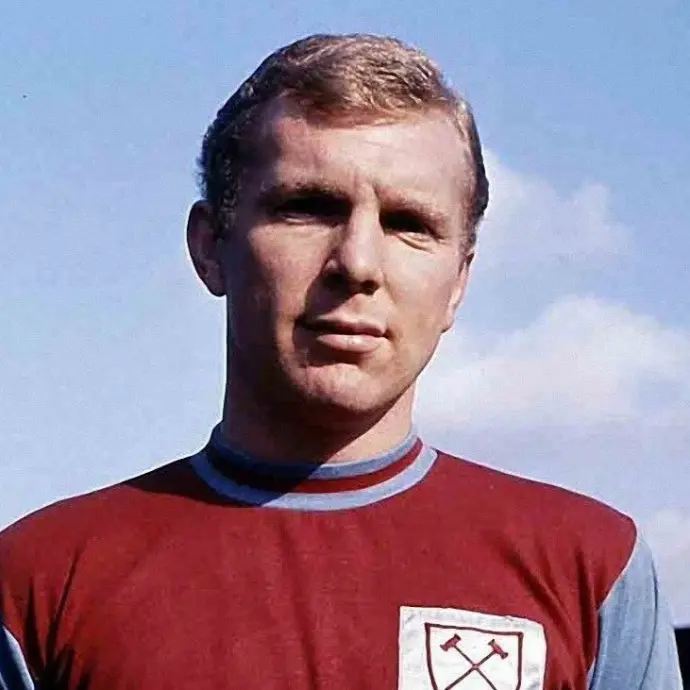
- Age : 23/24 years old
- Club : West Ham FC
- Statistics : 57 games, 1 goal, 3 assists
- Trophies : British Home Championship, Cup Winners Cup
- Individual Awards : Cup Winners Cup TOTY, Premier League TOTY
In the calendar year 1965, Bobby Moore stood as the embodiment of English football’s quiet strength and tactical brilliance. Already captain of West Ham United and a rising leader for the England national team, Moore’s performances that year laid the foundation for the historic triumph that would follow in 1966. At club level, Moore anchored West Ham’s defense with poise and precision. Though the Hammers finished mid-table in the First Division, Moore’s consistency and leadership were unquestioned. His reading of the game, calm under pressure, and pinpoint distribution made him one of the most respected defenders in the league. He also helped West Ham reach the League Cup semi-finals, showcasing his ability to marshal the backline in high-stakes matches. Internationally, Moore was England’s captain-in-waiting, already wearing the armband in several fixtures. In 1965, he led the Three Lions through a series of friendlies and World Cup qualifiers, building chemistry with teammates like Bobby Charlton and Geoff Hurst. His leadership was quiet but commanding—he didn’t shout, he simply made everyone better.
#7 Flórián Albert
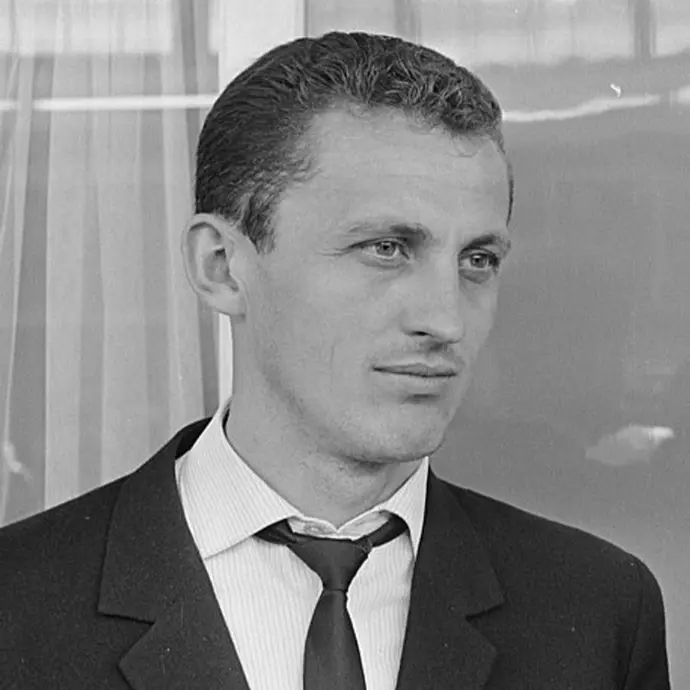
- Age : 24/25 years old
- Club : Ferencváros
- Statistics : 42 games, 37 goals, / assists
- Trophies : City Fairs Cup, Hungarian League Vice-Champion
- Individual Awards : Hungarian League TOTY, Hungarian League Golden Shoe (27 goals)
In the calendar year 1965, Flórián Albert—known as “The Emperor”—stood tall as Hungary’s footballing beacon, blending grace, intelligence, and lethal finishing into one unforgettable campaign. Already a national hero, Albert elevated his legend with performances that dazzled both domestically and across Europe. At club level, Albert was the undisputed talisman of Ferencváros TC, leading them to a historic triumph in the Inter-Cities Fairs Cup—Hungary’s first and only major European club title. In the final against Juventus, Albert’s creativity and vision helped unlock the Italian defense, sealing a 1–0 victory in Turin. Throughout the tournament, he was instrumental in eliminating giants like AS Roma, Athletic Bilbao, and Manchester United, showcasing his brilliance on the continental stage. In the Hungarian league, Albert finished as the top scorer with 27 goals, reaffirming his status as the most elegant and efficient striker in the country. His ability to glide past defenders, deliver pinpoint passes, and score from any angle made him a nightmare for opponents and a joy for spectators. Internationally, Albert continued to shine for Hungary, laying the groundwork for their strong showing at the upcoming 1966 World Cup. Though 1965 didn’t feature a major tournament, his performances in qualifiers and friendlies kept Hungary competitive and hopeful.
#6 Bobby Charlton
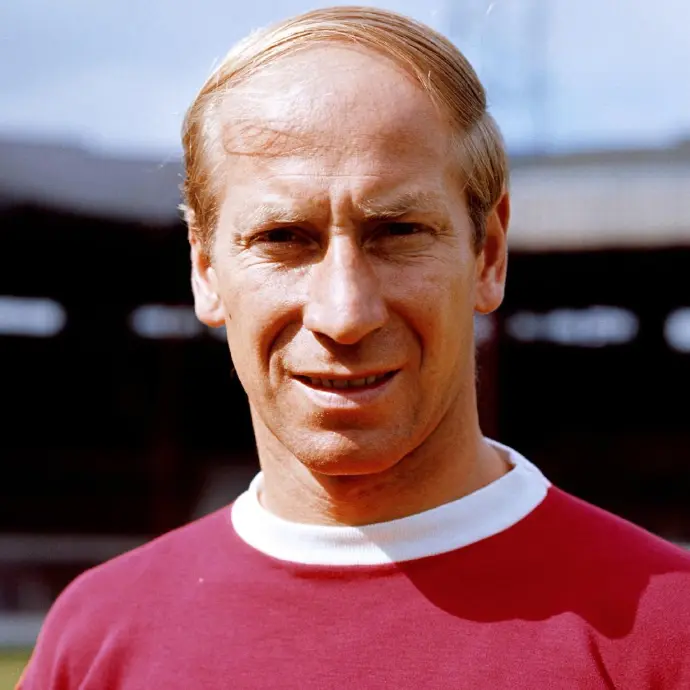
- Age : 27/28 years old
- Club : Manchester United
- Statistics : 63 games, 20 goals, 12 assists
- Trophies : Premier League, Community Shield
- Individual Awards : Premier League TOTY
In the calendar year 1965, Sir Bobby Charlton was the embodiment of resilience, brilliance, and quiet leadership—a player whose legacy was already etched into football’s soul. A survivor of the Munich air disaster and a World Cup winner-in-waiting, Charlton spent 1965 refining the artistry that would soon define England’s golden generation. At club level, Charlton was a driving force for Manchester United, helping the Red Devils finish fourth in the First Division and reach the FA Cup semi-finals. He scored 10 goals in 41 appearances, showcasing his trademark long-range strikes and visionary passing. His ability to glide past defenders and unleash thunderous shots made him one of the most feared midfielders in Europe. Internationally, Charlton was a cornerstone of England’s national team, preparing for the 1966 World Cup with a series of commanding performances. He scored five goals in 1965, including a brace against Mexico and a crucial strike against West Germany in a friendly that previewed the battles to come. His leadership and consistency made him indispensable to manager Alf Ramsey’s tactical revolution.
#5 Giacinto Facchetti
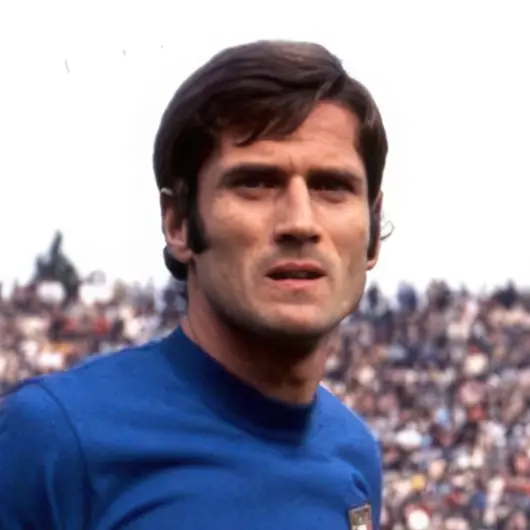
- Age : 22/23 years old
- Club : Inter Milan
- Statistics : 50 games, 10 goals, / assists
- Trophies : Champions League, Intercontinental Cup, Serie A, Finalsit Italian Cup
- Individual Awards : Champions League TOTY, Serie A TOTY
In the calendar year 1965, Giacinto Facchetti redefined what it meant to be a defender. Tall, fast, and impossibly elegant, the Inter Milan full-back was the prototype of the modern attacking defender—charging forward with the grace of a winger and the precision of a striker. At club level, Facchetti was a cornerstone of Helenio Herrera’s “Grande Inter”, a team that dominated Europe with tactical brilliance and individual flair. That year, Inter clinched the Serie A title, won their second consecutive European Cup by defeating Benfica, and lifted the Intercontinental Cup, asserting their supremacy on a global scale. Facchetti’s contributions were immense—he scored 2 goals in Serie A and added another in Europe, all while anchoring the defense with poise and power. Internationally, Facchetti continued to shine for the Italian national team, earning multiple caps and helping Italy in their World Cup qualifying campaign. Though the Azzurri didn’t feature in a major tournament that year, Facchetti’s leadership and consistency made him a fixture in the squad.
#4 Sandro Mazzola

- Age : 22/23 years old
- Club : Inter Milan
- Statistics : 52 games, 31 goals, / assists
- Trophies : Champions League, Intercontinental Cup, Serie A, Finalsit Italian Cup
- Individual Awards : Champions League TOTY, Serie A TOTY, Serie A Golden Shoe (17 goals)
In the calendar year 1965, Sandro Mazzola emerged as one of the brightest stars in European football, anchoring the midfield of Helenio Herrera’s legendary Inter Milan—a team that defined an era. Already a European champion from the previous season, Mazzola elevated his game to new heights, blending technical finesse with tactical intelligence. At club level, Mazzola was the heartbeat of “La Grande Inter”, guiding the Nerazzurri to a historic Serie A title and a second consecutive European Cup victory. He finished as Serie A’s top scorer with 17 goals in 33 matches, a remarkable feat for a midfielder. In the European Cup, he added 4 goals, helping Inter defeat Benfica in the final and cement their status as continental kings. Globally, Mazzola and Inter conquered the Intercontinental Cup, overcoming Argentina’s Independiente to claim world supremacy. His goal in the second leg sealed the triumph, showcasing his knack for delivering in the biggest moments. Internationally, 1965 marked Mazzola’s debut for the Italian national team, beginning a storied international career that would span a decade. Though Italy didn’t feature in major tournaments that year, Mazzola’s emergence added a new dimension to the Azzurri’s midfield.
#3 Luis Suárez
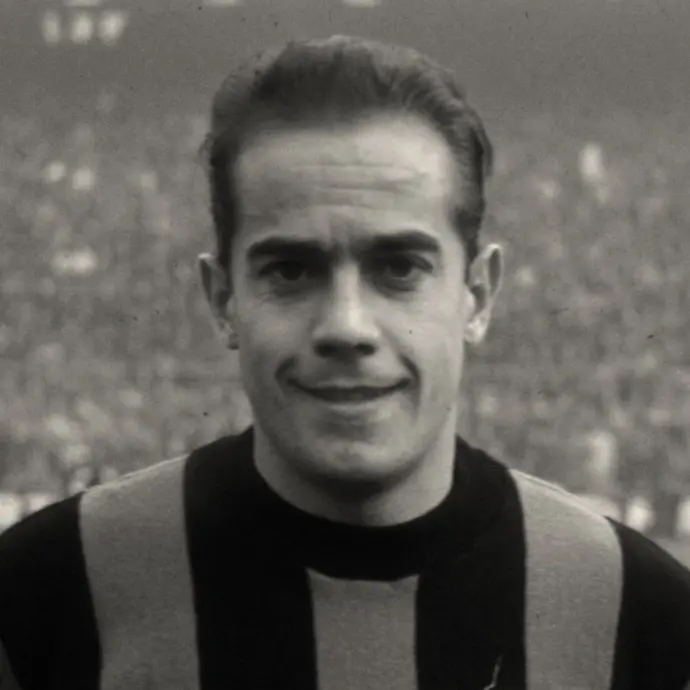
- Age : 29/30 years old
- Club : Inter Milan
- Statistics : 45 games, 7 goals, / assists
- Trophies : Champions League, Intercontinental Cup, Serie A, Finalsit Italian Cup
- Individual Awards : Champions League TOTY, Serie A TOTY
In the calendar year 1965, Luis Suárez Miramontes stood at the heart of one of the greatest club sides in football history—Helenio Herrera’s “Grande Inter”. Already a Ballon d’Or winner in 1960 and a European champion with Spain in 1964, Suárez entered 1965 as the cerebral force behind Inter Milan’s continental dominance. At club level, Suárez orchestrated Inter’s midfield with unmatched elegance and precision. That year, he helped the Nerazzurri retain their European Cup title, defeating Benfica in the final to secure back-to-back triumphs2. His vision and passing range were instrumental in Inter’s tactical mastery, blending defensive solidity with lightning-fast counterattacks. Suárez also lifted the Intercontinental Cup, cementing Inter’s status as world champions. In Serie A, Suárez’s leadership guided Inter to the Scudetto, his second Italian league title. Though not the most prolific scorer, his influence was felt in every phase of play—dictating tempo, unlocking defenses, and shielding the backline. He scored 8 goals in 29 league matches, a testament to his dual role as playmaker and goal threat. Internationally, Suárez remained a pillar of the Spanish national team, continuing to represent La Roja with distinction. Though Spain did not compete in major tournaments that year, his presence was vital in shaping the team’s identity post-Euro 1964.
#2 Eusébio
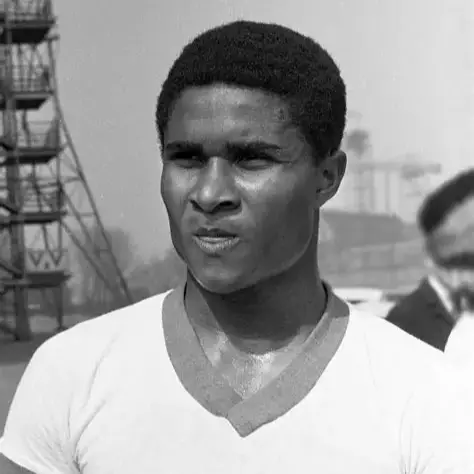
- Age : 23 years old
- Club : Benfica Lisbon
- Statistics : 40 games, 50 goals, / assists
- Trophies : Finalist Champions League, Portuguese League, Finalist Portuguese Cup
- Individual Awards : Champions League TOTY, Champions League Golden Shoe (9 goals), Portuguese League TOTY, Portuguese League Golden Shoe (28 goals)
In the calendar year 1965, Eusébio da Silva Ferreira reached the pinnacle of footballing excellence. Already a sensation with Benfica, the Mozambican-born striker elevated his status to global icon by winning the Ballon d’Or, becoming the first Portuguese player to receive the honor. His performances that year were a masterclass in athleticism, precision, and flair. At club level, Eusébio was unstoppable. He led Benfica to the Primeira Divisão title, finishing as the league’s top scorer with 28 goals. In the European Cup, he was even more lethal—scoring 9 goals, including decisive strikes against Real Madrid and Győri Vasas ETO, and earning the Golden Boot as the tournament’s top scorer. Though Benfica fell to Inter Milan in the final, Eusébio’s brilliance lit up every round. On the international stage, Eusébio was the driving force behind Portugal’s historic qualification for the 1966 FIFA World Cup. He scored six of Portugal’s nine goals in the qualifiers, guiding his nation past formidable opponents like Czechoslovakia, Romania, and Turkey. His performances laid the foundation for Portugal’s breakout on the world stage the following year.
Winner : Pelé
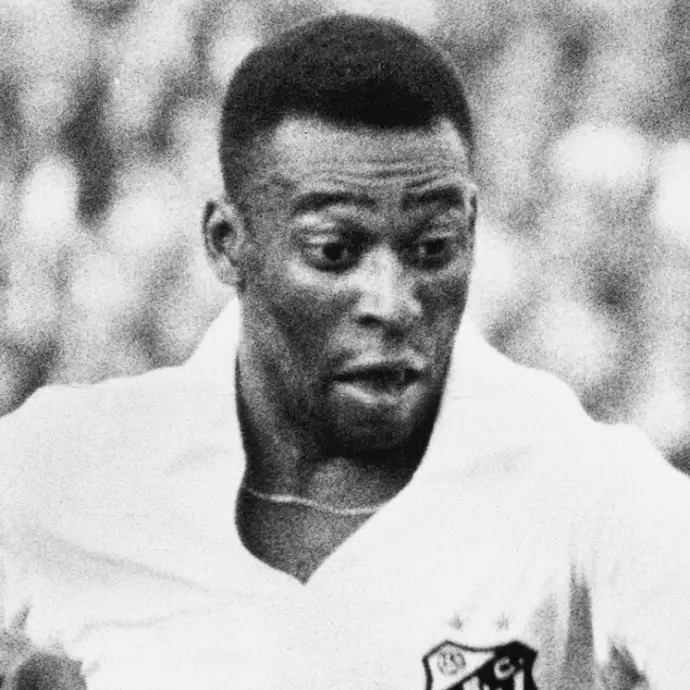
- Age : 24/25 years old
- Club : Santos FC
- Statistics : 53 games, 73 goals, 31 assists
- Trophies : Brazilian League, São Paulo Championship
- Individual Awards : Copa Libertadores TOTY, Copa Libertadores Golden Shoe (8 goals), São Paulo Championship POTY, São Paulo Championship TOTY, São Paulo Championship Golden Shoe (49 goals)
In the calendar year 1965, Edson Arantes do Nascimento—Pelé—was already more than a footballer; he was a living legend. At just 24 years old, Pelé had already conquered the world twice with Brazil, lifting the FIFA World Cup in 1958 and 1962. But 1965 was a year that showcased his relentless brilliance and enduring dominance at club level with Santos FC. Pelé’s artistry on the pitch was a symphony of power, precision, and imagination. That year, he led Santos to yet another Campeonato Paulista title, scoring an astonishing 49 goals in the competition. His performances were not just prolific—they were poetic. Whether gliding past defenders or unleashing thunderous strikes from distance, Pelé made the extraordinary look effortless. In continental competition, Pelé continued to dazzle in the Copa Libertadores, netting 8 goals and reaffirming Santos’s status as a South American powerhouse. Though Santos did not lift the trophy that year, Pelé’s individual brilliance remained unmatched, and his influence stretched far beyond the pitch. He was Brazil’s ambassador to the world, a symbol of joy, flair, and excellence.